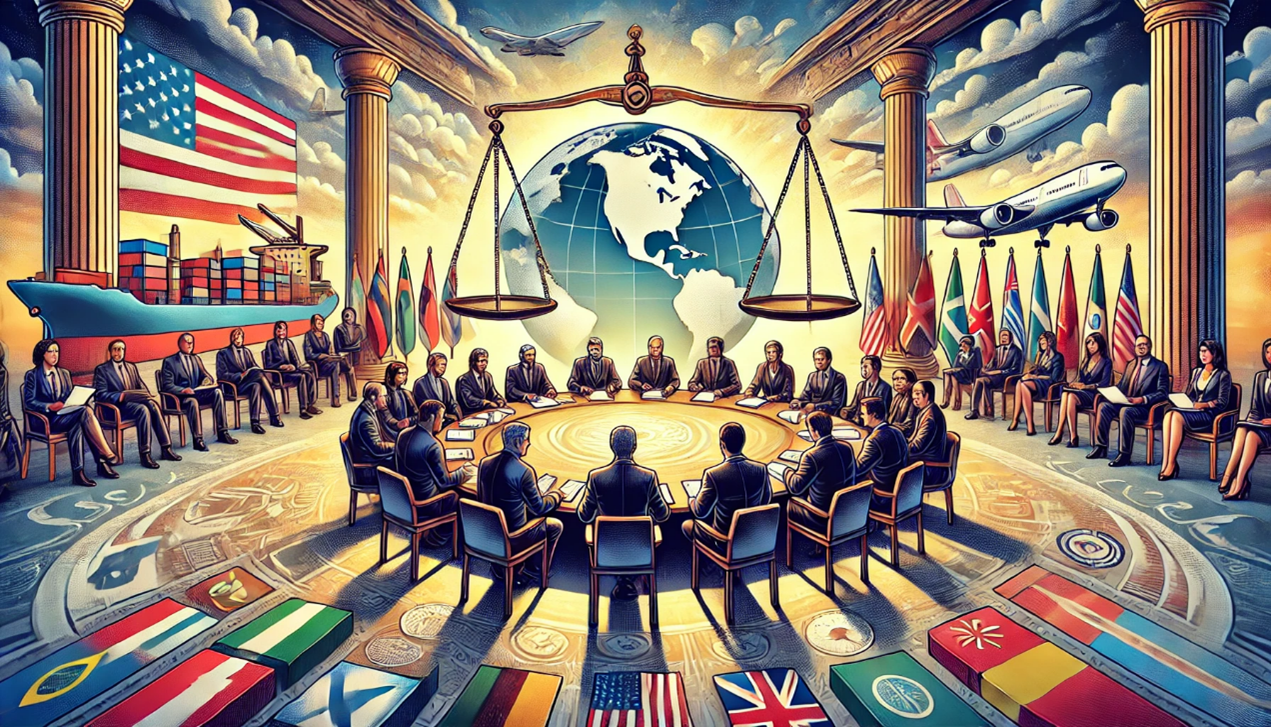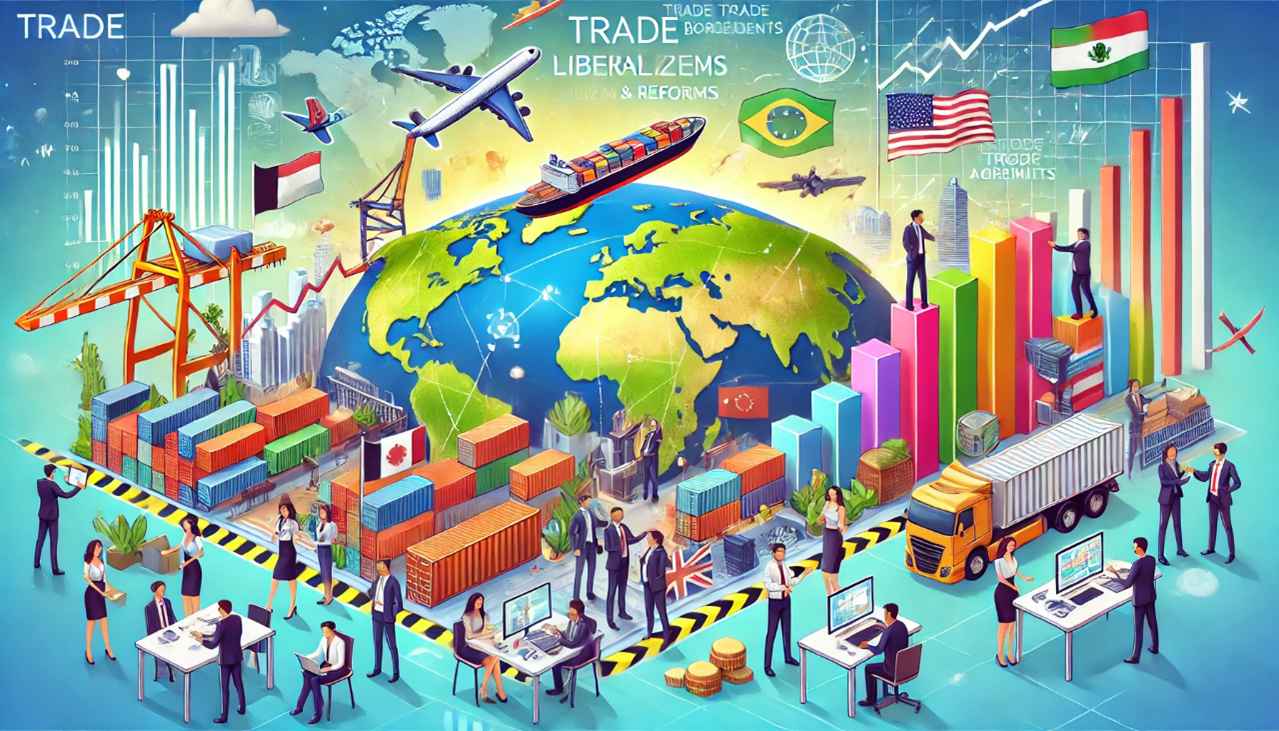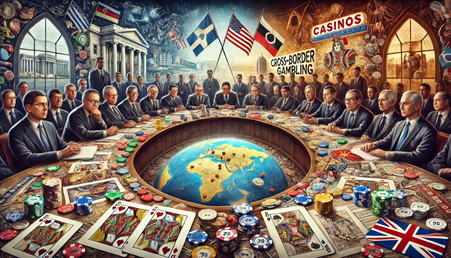How can countries resolve trade disputes without escalating into economic conflict?

How can countries resolve trade disputes without escalating into economic conflict?
by Nathaniel 11:28am Jan 04, 2025

How can countries resolve trade disputes without escalating into economic conflict?
Resolving trade disputes without escalating into economic conflict is crucial for maintaining global stability, promoting cooperation, and ensuring sustainable economic growth. Countries can use a variety of diplomatic, legal, and policy-based approaches to address trade disagreements constructively. Here are some ways in which countries can manage trade disputes and avoid escalation into broader economic conflict:
1. Multilateral Trade Negotiations
Countries can resolve trade disputes through multilateral trade forums such as the World Trade Organization (WTO). These organizations offer mechanisms for resolving disputes in a structured, legal manner, helping to prevent unilateral actions that could escalate tensions.
WTO Dispute Resolution Mechanism: The WTO provides a structured process for member countries to file complaints about trade violations and resolve disputes.The process includes consultations, panels of experts, and the possibility of appeals. The goal is to address issues through established international rules and prevent retaliatory measures that could escalate.
Example: The WTO’s ruling on the U.S.-China trade dispute over intellectual property rights and tariffs helped resolve some issues without triggering further trade hostilities.
2. Bilateral Negotiations and Diplomacy
Countries can engage in direct negotiations to address trade disputes before they escalate. Diplomatic channels, trade missions, and high-level discussions can facilitate resolution and avoid the imposition of tariffs or other punitive measures.
Bilateral Agreements: Many trade conflicts can be settled through bilateral agreements or memoranda of understanding (MOUs), in which both sides agree to address specific issues without resorting to tariffs or other protectionist measures. Such agreements allow for tailored solutions that reflect the specific concerns of both parties.
Example:The U.S. and Japan have often resolved trade disputes through bilateral trade negotiations, such as the 2019 U.S.-Japan trade agreement, which focused on reducing tariffs on agricultural goods without escalating tensions.
3. Mediation and Arbitration
Neutral third parties, such as international mediators or arbitration panels, can help resolve disputes without escalating conflict. Mediation involves a neutral party facilitating negotiations between disputing countries, while arbitration involves a third party making a binding decision.
Arbitration Panels:Organizations such as the WTO or the International Chamber of Commerce (ICC) can provide arbitration services to resolve trade disputes.These panels issue binding rulings on trade issues, ensuring that both parties adhere to international trade law.
Example:The 2012 WTO ruling in favor of the European Union in a dispute with China over rare earth metals was an example of how arbitration helped resolve a complex trade issue without escalating to full-blown economic conflict.
4. Compromise and Concessions
Countries can often resolve disputes through compromise and mutual concessions. This involves both sides making adjustments to their positions to reach a balanced solution that addresses the concerns of both parties.
Negotiated Concessions: In trade disputes, both sides can agree to reduce tariffs, open markets, or address regulatory concerns as part of a compromise. Such concessions are often phased in over time, allowing for gradual changes that minimize economic shock.
Example:In the U.S.-Mexico-Canada Agreement (USMCA), many contentious issues, such as tariffs on steel and aluminum, were addressed through negotiated compromises that avoided full-scale conflict.
5. Trade Liberalization and Reforms
In some cases, trade disputes can be resolved through trade liberalization or reforms that make the trading environment more transparent and predictable. By addressing underlying issues like market access, tariffs, and regulatory barriers, countries can prevent future conflicts.
Domestic Reforms:Countries facing trade disputes may consider domestic policy changes to address complaints raised by trading partners. For instance, a country accused of unfair subsidies or intellectual property theft may institute reforms to improve the fairness of its trade practices.
Example: In response to trade disputes over intellectual property, China has taken steps to strengthen its IP protection laws, which helped ease tensions with the U.S. and other trading partners.
6. Establishing Clear Communication Channels
Having robust communication channels between governments and trade negotiators is essential for preventing misunderstandings and de-escalating tensions. Open dialogue allows countries to clarify intentions, address grievances, and prevent the build-up of hostility.
Regular Dialogues:Establishing ongoing dialogues between trade ministries or economic leaders can help prevent minor disputes from escalating. These dialogues create opportunities for early intervention and quick resolution before issues become entrenched.
Example: The U.S.-China Strategic and Economic Dialogue created regular channels for communication, allowing both sides to discuss economic issues and resolve trade disputes without escalating tensions.
7. Avoiding Unilateral Retaliation
Unilateral actions, such as the imposition of tariffs or trade restrictions, often escalate trade disputes. Instead, countries should avoid retaliatory measures and opt for collective action through international institutions or consultative frameworks.
Cooperative Action:Rather than taking unilateral action, countries should work through multilateral organizations like the WTO or regional trade agreements (such as the European Union or Asia-Pacific Economic Cooperation (APEC)) to address grievances cooperatively.
Example:The U.S. and European Union have resolved several trade disputes over subsidies (e.g., in the Airbus vs. Boeing case) through multilateral processes rather than escalating to trade wars.
8. Transparency and Regulatory Cooperation
Many trade disputes arise from differences in regulations or perceived unfair trade practices. Promoting regulatory cooperation and transparency can help countries identify issues before they lead to disputes. This can involve mutual recognition of standards, harmonization of regulations, or joint working groups.
Regulatory Alignment:Countries can engage in regulatory dialogues to ensure that products, services, and standards are recognized across borders. This can help to reduce conflicts over non-tariff barriers, such as technical regulations or sanitary and phytosanitary standards.
Example:The Transatlantic Trade and Investment Partnership (TTIP)negotiations between the U.S. and the EU aimed at reducing regulatory barriers and harmonizing standards to prevent conflicts over product regulations.
9. Adherence to International Laws and Agreements
Countries should adhere to international trade laws and agreements, such as those under the WTO or regional trade pacts. By following established rules, countries ensure that disputes are resolved in a manner consistent with global norms, reducing the likelihood of escalation.
Commitment to Rule-Based Trade: Upholding international laws and respecting trade agreements helps prevent the misuse of trade policies for political or economic advantage, fostering a more predictable global trading system.
Example:The U.S. and China’s resolution of the trade war included reference to WTO rules, where both countries agreed to certain commitments on intellectual property and trade practices.
Conclusion
To resolve trade disputes without escalating into economic conflict, countries should prioritize diplomacy, legal frameworks, multilateral negotiations, and compromise. By utilizing international institutions like the WTO, engaging in direct talks, and respecting trade laws, nations can address disputes in a cooperative, rule-based environment. Proactive measures such as transparency, communication, and regulatory cooperation can also help prevent conflicts from arising in the first place. This approach fosters long-term stability and mai






